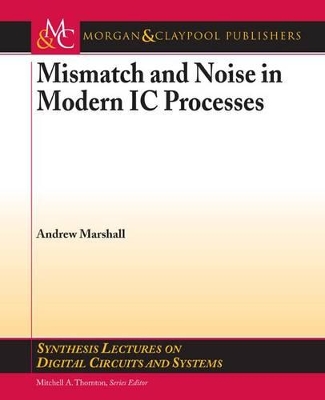Synthesis Lectures on Digital Circuits and Systems
1 total work
Component variability, mismatch, and various noise effects are major contributors to design limitations in most modern IC processes. "Mismatch and Noise in Modern IC Processes" examines these related effects and how they affect the building block circuits of modern integrated circuits, from the perspective of a circuit designer. Variability usually refers to a large scale variation that can occur on a wafer to wafer and lot to lot basis, and over long distances on a wafer. This phenomenon is well understood and the effects of variability are included in most integrated circuit design with the use of corner or statistical component models. Mismatch, which is the emphasis of section I of the book, is a local level of variability that leaves the characteristics of adjacent transistors unmatched. This is of particular concern in certain analog and memory systems, but also has an effect on digital logic schemes, where uncertainty is introduced into delay times, which can reduce margins and introduce 'race' conditions. Noise is a dynamic effect that causes a local mismatch or variability that can vary during operation of a circuit, and is considered in section II. Noise can be the result of atomic effects in devices or circuit interactions, and both of these are discussed in terms of analog and digital circuitry.
